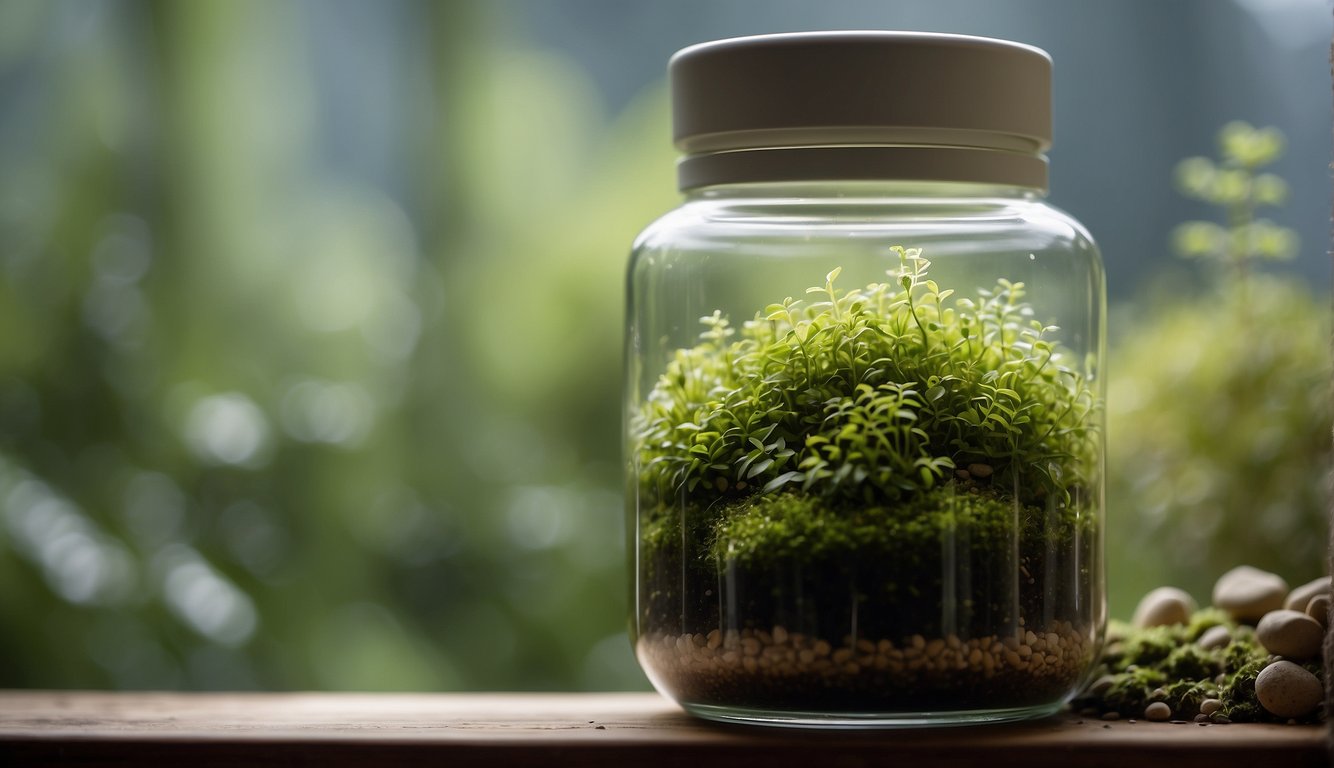TheHerbProf.com is a treasure trove of knowledge for those interested in natural healing and herbal remedies. The website is run by Paul Johnston MD. A naturopathic who has not only received extensive education in the field but also has personal experience in self-healing.
How to Grow Moss Indoors? If you’re looking to add a touch of green to your indoor space, growing moss is a great option. Moss is a low-maintenance plant that can thrive in a variety of indoor environments. Plus, it adds a unique and natural touch to any room.
To get started with growing moss indoors, you’ll need a few supplies. Large, transparent containers or a terrarium are ideal for growing moss, as they provide a controlled environment and allow you to easily maintain your moss. You’ll also need a suitable growing medium, such as potting soil or sphagnum moss, and a source of moisture, such as a spray bottle or mister. With these supplies, you’ll be ready to create a thriving indoor moss garden.
Indoor moss gardens can be a great way to add a touch of nature to your home or office. With a few simple supplies and some basic care, you can create a vibrant and healthy moss garden that will last for years to come. Whether you’re an experienced gardener or just starting out, growing moss indoors is a fun and rewarding project that anyone can enjoy.
Understanding Moss
As someone who loves to grow moss indoors, I believe it’s essential to understand the basics of moss and its growth requirements. In this section, I’ll provide an overview of moss and its types, as well as the conditions required for successful moss growth.
Types of Moss
Moss is a type of bryophyte, which means it’s a non-vascular plant that doesn’t produce flowers, fruits, or seeds. There are many varieties of moss, but the most common types used for indoor gardening include cushion moss, fern moss, rock cap moss, and sheet moss.
Moss Growth Requirements
Growing moss indoors requires specific conditions for optimal growth. Moss prefers a slightly acidic soil with a pH range of 5.0 to 6.0. It also requires a moist environment with good drainage to prevent waterlogging.
Moss can grow in low light conditions, making it ideal for indoor gardening. However, it still requires some light for photosynthesis, so placing it near a window that receives filtered light is best.
To summarize, successful moss growth indoors requires:
- Slightly acidic soil with a pH range of 5.0 to 6.0
- A moist environment with good drainage
- Low light conditions with some filtered light for photosynthesis
By understanding the basics of moss and its growth requirements, you’ll be better equipped to grow moss successfully indoors.
Setting Up Your Indoor Moss Garden

Growing moss indoors can be a fun and rewarding experience. To get started, you will need to choose the right container, select the appropriate soil and foundation, and arrange rocks and pebbles to create the ideal environment for your moss to thrive.
Choosing the Right Container
When it comes to selecting a container for your indoor moss garden, there are a few things to keep in mind. First, you want to choose a container that is wide and shallow so that you can easily reach into it to maintain your moss. Glass or plastic containers work well, and you can find a variety of options at your local garden center or online.
If you opt for a terrarium, make sure it comes with a lid to best store your moss. Transparent containers are ideal, as they allow light to reach your moss, which is essential for growth.
Selecting Soil and Foundation – How to Grow Moss Indoors?
Moss doesn’t have roots, so it doesn’t need soil to grow. However, it does need a foundation to anchor itself to and absorb water from. You can use a variety of materials, including rotting bark, granulated charcoal, and even sand.
To create the base of your indoor moss garden, add two inches of potting soil and mist the soil with a spray bottle filled with clear water. Then, place different sized stones and branched sticks to make the ground look like the forest floor. Place larger objects in the back and smaller ones up front to create depth and interest.
Arranging Rocks and Pebbles
Rocks and pebbles not only add visual interest to your indoor moss garden, but they also help to retain moisture and provide a stable foundation for your moss to grow on. You can use a variety of sizes and shapes to create a natural-looking environment.
Arrange your rocks and pebbles in a way that mimics the natural landscape, with larger stones in the back and smaller ones in the front. You can also add a few decorative elements, such as driftwood or seashells, to create a unique and personalized look.
With these tips, you can create a beautiful and thriving indoor moss garden that will provide years of enjoyment.
Planting and Propagation – How to Grow Moss Indoors?
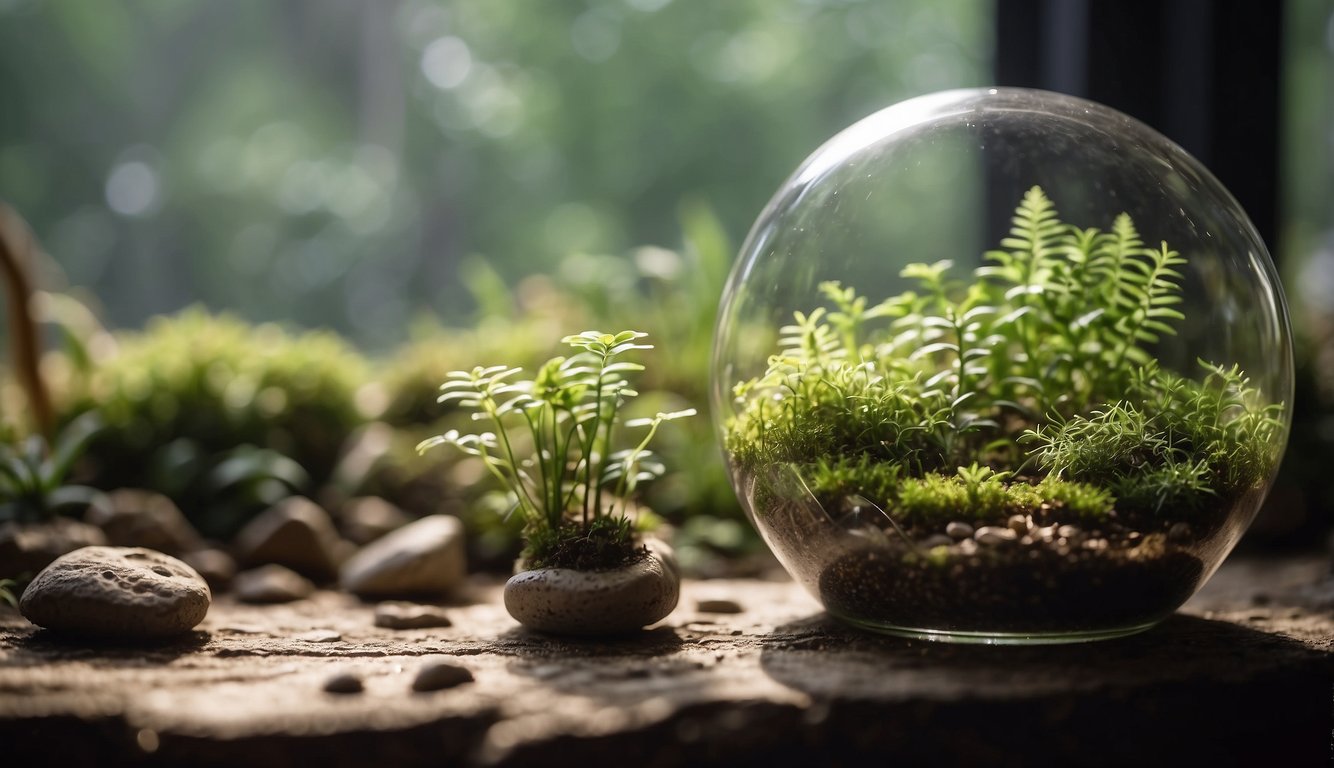
Growing moss indoors requires some preparation and patience. Here are some tips to help you get started.
Preparing Moss Spores or Fragments
Before planting moss, you need to prepare the spores or fragments. You can purchase moss spores or collect fragments from the wild. If you are collecting fragments from the wild, make sure to get permission from the landowner and never take more than you need.
To prepare moss spores or fragments, you can create a slurry by blending the spores or fragments with buttermilk or yogurt. This slurry will help the moss to adhere to surfaces and grow. Alternatively, you can use a paintbrush to transfer the spores or fragments onto the planting surface.
Planting Techniques – How to Grow Moss Indoors?
When planting moss indoors, you need to consider the type of surface you will be planting on. Moss can grow on a variety of surfaces, including rocks, soil, and even bricks. Make sure the surface is clean and free of debris before planting.
To plant moss, spread the slurry or use a paintbrush to transfer the spores or fragments onto the surface. Make sure to press the moss down gently to help it adhere to the surface. Keep the surface moist by misting it regularly and avoid direct sunlight.
Propagation Methods
Moss can be propagated by fragmentation or spore dispersal. To propagate moss by fragmentation, simply cut a piece of moss and transplant it to a new location. Make sure to keep the moss moist and avoid direct sunlight.
To propagate moss by spore dispersal, collect the spores and spread them on a planting surface. Keep the surface moist and avoid direct sunlight. Over time, the spores will germinate and grow into moss.
With these planting and propagation techniques, you can successfully grow moss indoors. Remember to be patient and maintain a moist environment for your moss to thrive.
Optimizing Growing Conditions – How to Grow Moss Indoors?
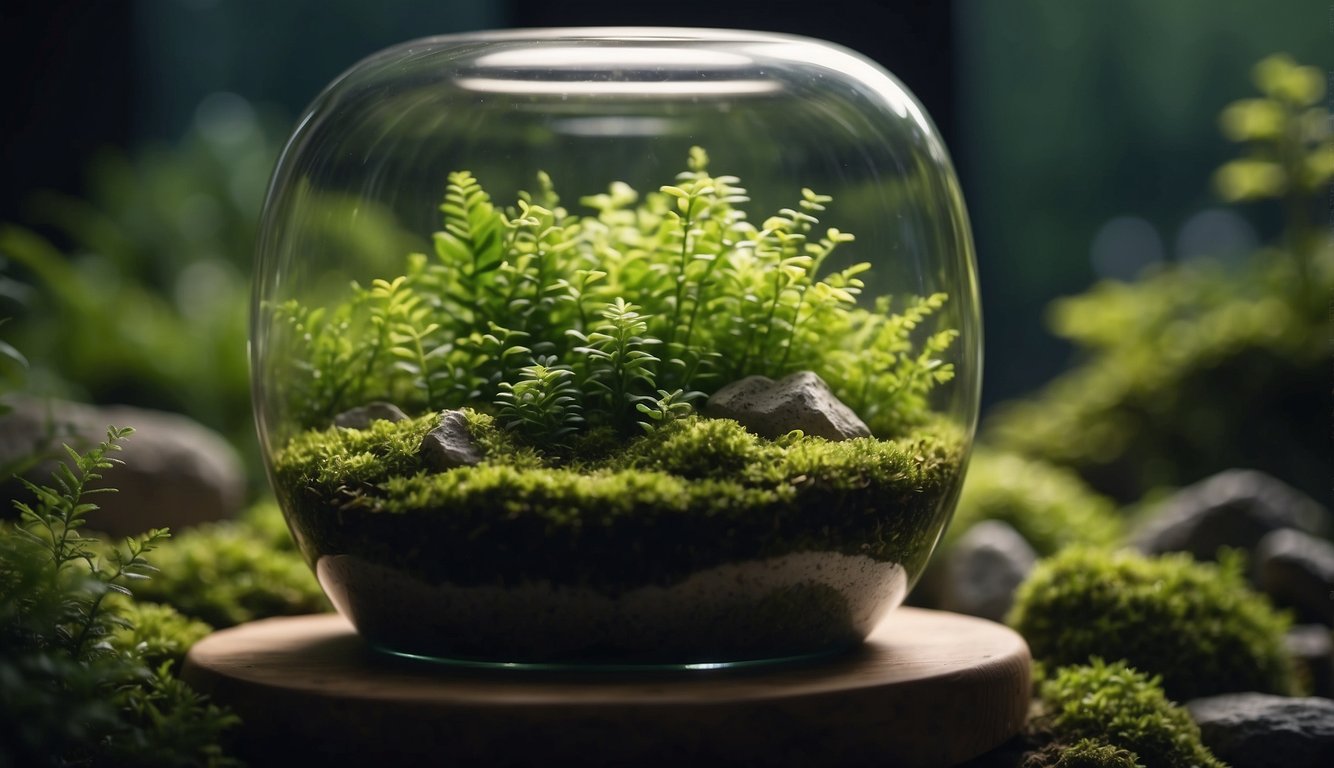
Growing moss indoors requires specific growing conditions to ensure that the moss thrives. Here are the three most important factors to consider when optimizing the growing conditions for your indoor moss garden.
Lighting and Shade
Moss prefers indirect or shaded light, making it ideal for areas that receive filtered sunlight or are away from direct windows. Direct sunlight can be harmful to moss, causing it to dry out and die. If natural light is not available, you can use a lamp or fluorescent lamp to provide the necessary light for your moss. However, it is important to ensure that the light source is not too close to the moss, as this can cause it to dry out.
Moisture and Watering – How to Grow Moss Indoors?
Moss requires a consistent supply of moisture to grow. You can use a spray bottle to mist the moss regularly with distilled water to keep it moist. It is important to avoid overwatering the moss, as this can cause it to rot. To avoid this, ensure that the soil is well-draining and that excess water is able to drain away from the moss.
Temperature and Humidity
Moss thrives in a humid environment with a temperature range of 60 to 90°F (15 to 32°C). To maintain the optimal humidity level, you can use a closed container and maintain humidity at 70% or higher. You can also use a humidifier or place a tray of water near the moss to help maintain the humidity level. While fertilizer isn’t necessary, a diluted skimmed milk mix can boost its growth.
By optimizing the growing conditions for your indoor moss garden, you can ensure that your moss thrives and remains healthy. Remember to regularly monitor the lighting, moisture, temperature, and humidity levels to ensure that they remain within the optimal range for your moss.
Ongoing Moss Care – How to Grow Moss Indoors?
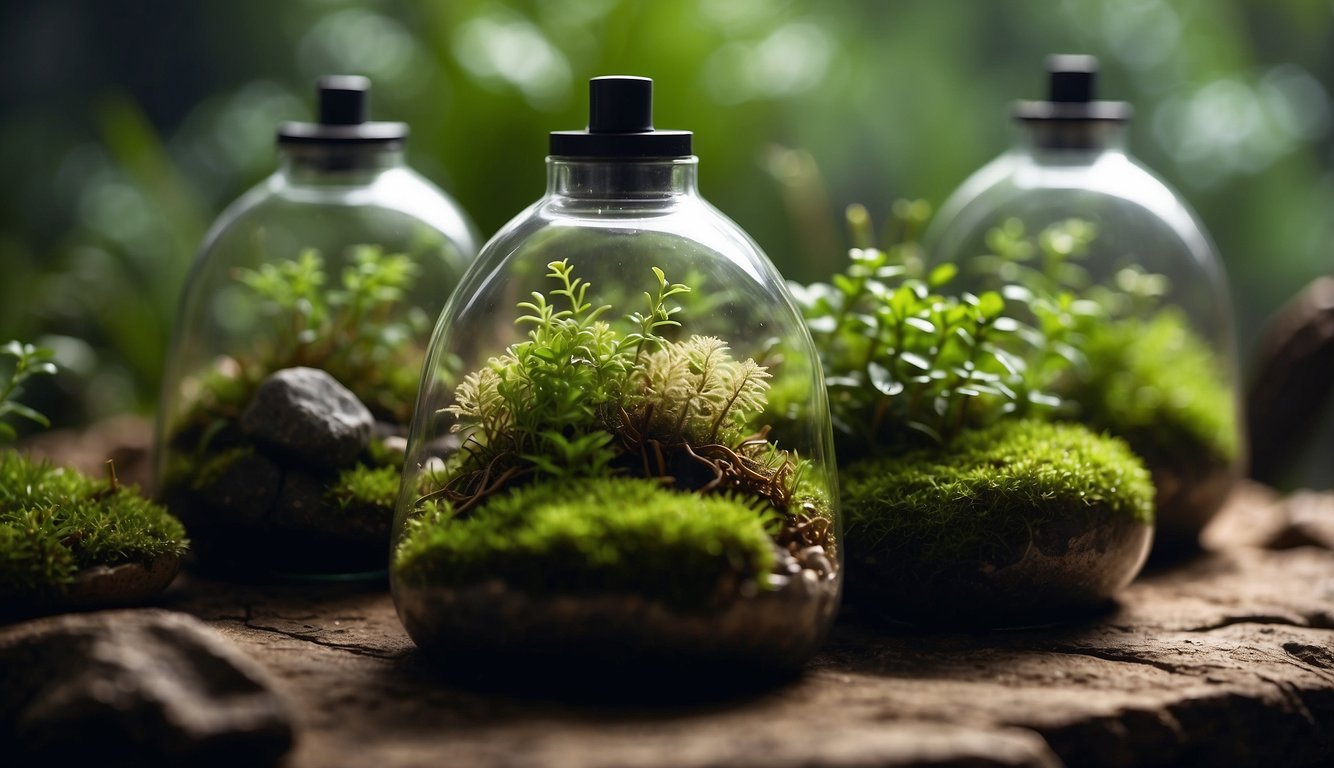
Once you have your indoor moss garden set up, it’s important to maintain it properly to ensure that it stays healthy and vibrant. Here are some ongoing moss care tips to keep in mind:
Feeding and Nutrients – How to Grow Moss Indoors?
Moss does not require a lot of nutrients to grow, but it does benefit from occasional fertilization. You can use a diluted skimmed milk mix to boost its growth. Apply the mixture once a month during the growing season. Be careful not to over-fertilize, as this can cause the moss to become too lush and attract pests.
Pruning and Maintenance
Moss is a low-maintenance plant, but it still requires some upkeep. Remove any dead or yellowing moss, as this can attract pests and diseases. You can also trim the edges of the moss to keep it looking neat and tidy. Be careful not to damage the moss when pruning, as this can cause it to die back.
Troubleshooting Common Issues
If you notice any issues with your indoor moss garden, there are a few things you can do to troubleshoot the problem. Here are some common issues and their solutions:
- Yellowing or browning moss: This can be a sign of over-fertilization or underwatering. Cut back on fertilization and make sure the moss is getting enough water.
- Moss turning black: This can be a sign of too much moisture or poor drainage. Make sure the container has adequate drainage and reduce watering if necessary.
- Pests: Common pests that can affect moss include slugs, snails, and spider mites. You can remove pests by hand or use a natural insecticide.
By following these ongoing moss care tips, you can ensure that your indoor moss garden stays healthy and vibrant for years to come.
Creative Moss Projects – How to Grow Moss Indoors?

If you’re looking for creative ways to display your indoor moss, there are plenty of options to choose from. Here are a few ideas to get you started:
Building a Moss Terrarium – How to Grow Moss Indoors?
One of the most popular ways to grow moss indoors is in a terrarium. Terrariums are closed containers that create a miniature landscape, and they can be made from a variety of materials, including glass containers, stones, and sand. To create a moss terrarium, you’ll need a glass container that is large enough to hold your moss and any other plants or decorations you want to include.
To build your moss terrarium, start by adding a layer of stones to the bottom of the container. This will help with drainage and prevent the soil from becoming waterlogged. Next, add a layer of sand or soil, and then add your moss. Make sure to mist the moss with water to keep it moist.
You can also add other decorations to your terrarium, such as small figurines or rocks. Just make sure that they don’t take up too much space and that they won’t harm your moss.
Moss Art and Decoration
Moss can also be used to create unique and interesting art pieces and decorations. For example, you can create a moss wall by attaching moss to a wooden frame and hanging it on your wall. This can create a beautiful and natural-looking backdrop for your home.
Another idea is to create moss balls, which are small balls of moss that can be used as decorations or centerpieces. To create a moss ball, start by soaking sphagnum moss in water until it is fully saturated. Then, shape the moss into a ball and wrap it with fishing line to hold it together. You can also add other decorations to your moss ball, such as flowers or small figurines.
Overall, there are many creative ways to display your indoor moss, from terrariums to art pieces. Just make sure to choose the right materials and keep your moss moist and healthy.
How to Grow Moss Indoors
Today, we’re stepping into the enchanting world of moss. Yes, that’s right, moss! This humble plant can transform your indoor space into a lush, green sanctuary.
Firstly, let’s talk about location. Moss loves shady, humid spots. So, that bathroom window sill? Perfect!
Next, watering. Moss doesn’t have roots like other plants. It absorbs water through its leaves. So, mist it, don’t water it!
And here’s a fun fact! Moss doesn’t need soil. It can grow on rocks, wood, even bricks. Talk about versatile!
So, why not give moss a try? It’s easy to care for, looks beautiful, and brings a bit of the forest into your home.
For more indoor gardening tips, do visit the website theherbprof.com. Keep it green, folks!
References – How to Grow Moss Indoors?
Little Herb Encyclopedia, by Jack Ritchason; N.D., Woodland Publishing Incorporated, 1995
The Ultimate Healing System, Course Manual, Copyright 1985, Don Lepore
Planetary Herbology, Michael Tierra, C.A., N.D., Lotus Press, 1988
Handbook of Medicinal Herbs, by James A. Duke, Pub. CRP Second Edition 2007
The Complete Medicinal Herbal, by Penelope Ody, Published by Dorling Kindersley
Check the Following Articles!
Do Rubber Trees Like to Be Root Bound?
Tomato Water Wilt: Causes and Solutions
Grow Carrots from Tops: A Simple Guide
Frequently Asked Questions – How to Grow Moss Indoors?
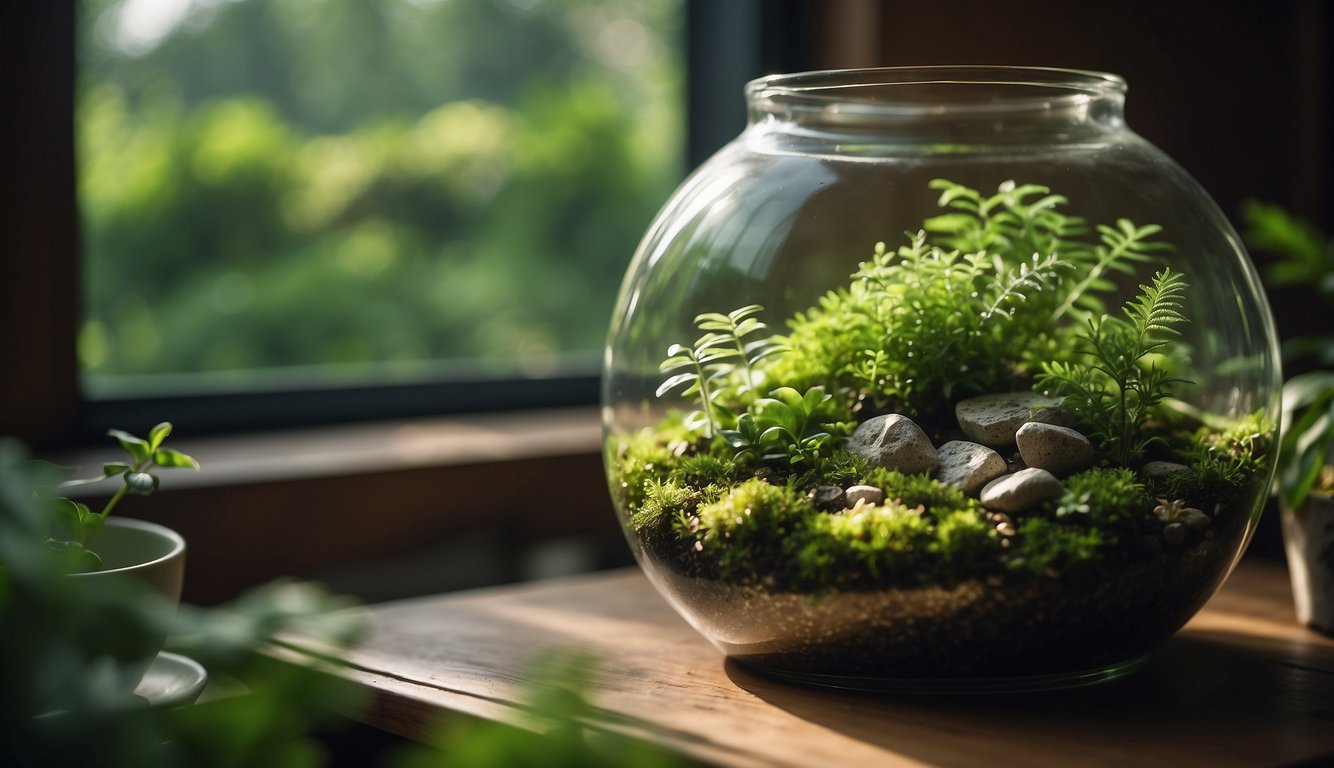
What are the ideal conditions for growing moss indoors?
Moss prefers a humid environment with low to medium light levels. It is important to keep the moss moist but not waterlogged, as too much water can cause root rot. The ideal temperature range for indoor moss cultivation is between 60°F to 75°F.
Can you cultivate moss indoors without using soil?
Yes, you can cultivate moss indoors without using soil. Moss can be grown on a variety of surfaces, such as rocks, wood, and even concrete. It is important to provide a surface that the moss can attach to and grow on. You can also use a substrate like sphagnum moss or peat moss to provide a base for the moss to grow on.
What types of moss are best suited for indoor cultivation?
There are many types of moss that are well-suited for indoor cultivation, such as sheet moss, cushion moss, and fern moss. These types of moss are typically low-growing and require minimal maintenance.
How do you properly care for and maintain moss in an indoor environment?
To properly care for and maintain moss in an indoor environment, you should keep the moss moist by misting it regularly. It is important to avoid overwatering, as this can cause root rot. Moss also benefits from occasional fertilization with a diluted liquid fertilizer. Additionally, you should remove any dead or brown moss to prevent the spread of disease.
What are the steps for creating a moss terrarium or container garden?
To create a moss terrarium or container garden, you will need a clear glass container, such as a jar or a bowl, some pebbles or gravel for drainage, and a substrate for the moss to grow on. You can also add decorative elements like rocks, shells, or figurines. First, add a layer of pebbles or gravel to the bottom of the container for drainage. Next, add a layer of substrate, such as sphagnum moss or peat moss. Finally, add the moss and any decorative elements. Mist the moss regularly and keep it out of direct sunlight.
What are the benefits of having an indoor moss garden?
Having an indoor moss garden can provide many benefits, such as improving air quality, reducing stress, and adding a natural element to your indoor space. Moss is also easy to care for and can be a fun and rewarding project for both children and adults.
